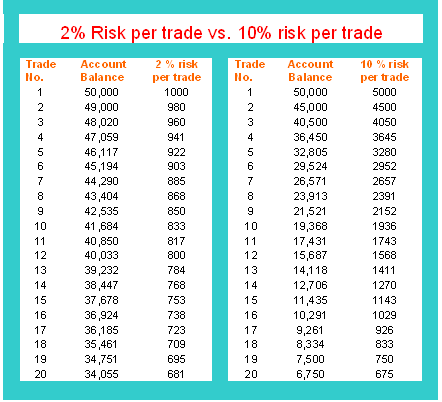

One must also take into consideration the industry to which a company belongs before making a judgement based on its dividend payout ratio. As mentioned previously, the dividend payout ratio is a crucial metric to understand a company’s priorities. However, that is only a single consideration when interpreting a company’s dividend payout ratio. One of the most critical considerations that need to be made when analysing DPR is the maturity of a company. Funds from operations, or FFO, refers to the figure used by real estate investment trusts to define the cash flow from their operations. As you can see, Joe is paying out 30 percent of his net income to his shareholders.
You can do this every quarter or annually, but know what you’re looking at. For example, a company that earns $1 per share in EPS and pays out $0.25 in dividends has a payout ratio of 25%. If you want to know the answer to „how are dividends calculated?“ or how to calculate dividends, you can check out our other articles. The dividend payout ratio is the ratio of the total amount of dividend in proportion to the net income of the company. A dividend payout ratio is the percentage of total earnings paid to the shareholders in the form of dividends.
When the distribution is paid, the liability to shareholders reverses but cash transfers to their account to make up the difference. On the other hand, the dividend payout ratio is a measure of dividend distributions relative to a company’s earnings. A company that pays all of its earnings to investors as a dividend will have a payout ratio of 100%, while one that only pays out a quarter of earnings will have a ratio of 25%.
This contains a mix of large-cap growth stocks, large-cap dividend stocks, and small-cap growth stocks. His stock-picking strategy combines ‘growth’, ‘quality’, and ‘thematic’ approaches. You should have received an annual statement from the mutual fund company telling you how much interest you earned each year. They keep records of that information and should be able to supply it now if you don’t have the records in your possession.
Established Companies
Also, some companies may pay every six months (semi-annually) or annually or no set schedule . If you want to calculate the yield applicable over a period of time then the above approach might give you an inflated dividend yield. Some companies may pay every six months (semi-annually) or annually or no set schedule . The money may be used to fund a new project, acquire new assets, or pursue mergers and acquisitions (M&A). The company historically paid out 45% of its earnings as dividends. Note that there may be slight differences compared to the first formula’s calculation due to rounding and/or the exclusion of preferred shares, as only common shares are accounted for.
- There isn’t an optimal dividend payout ratio, as the DPR of a company depends heavily on the industry they operate in, the nature of their business, and the maturity and business plan of the company.
- He’s been in online publishing since 2013 and has a degree from the University of Guelph.
- It can be calculated using the Outstanding Shares Method, Earnings Method, and retention ratio.
- Investors are especially interested in the DP ratio because they want to check if businesses pay out a healthy portion of their net income to shareholders.
A company with a high level of debt will have fewer earnings available for dividend distributions because of the cost of the debt . The dividend payout ratio can give a lot of information about a stock, its dividend and its financial health. At face value, the payout ratio tells you how much of earnings are paid as dividends, which also tells how much of earnings are available for the company’s use. A higher payout ratio means the company has less of its capital available for reinvestment and may have to rely on debt to fund expansions or other operations.
A dividend payout ratio of 0% to 30% is observed with these companies. As dividends are inconsistent with these companies, income-oriented investors do not value such dividends as much. A dividend payout ratio tells us about the financial strengths of a company.
What is a good dividend payout ratio?
Charlene Rhinehart is a CPA , CFE, chair of an Illinois CPA Society committee, and has a degree in accounting and finance from DePaul University. Generally, more mature and stable companies tend to have a higher ratio than newer start up companies.
The dividend yield formula and dividend payout ratio formula deliver two very closely related figures. The first is the rate of return that an investor can expect from an investment. The dividend yield is the dividend distribution amount divided by the stock price and represented as a percentage.

Under circumstances where a company has no earnings or revenue and still dishes out dividends, the payout ratio formula will generate a negative equation, the so-called negative payout ratio. The payout ratio is the total denomination of the dividends given out to shareholders against its revenue. It can be calculated using the Outstanding Shares Method, Earnings Method, and retention ratio. Whether a payout ratio is good or bad depends on the intention of the investor. A high payout ratio is usually preferred by those investors who purchase shares to earn regular dividend income and a low ratio is good for those who seek appreciation in the value of common stock in future.
Dividend payout evaluates the percentage of a business’s net earnings dispersed to shareholders as dividends. Investors are especially interested in the DP ratio because they want to check if businesses pay out a healthy portion of their net income to shareholders. For example, most start-ups and technology firms pay no dividends at all. In fact, Apple, which was founded in the 1970s, only recently delivered its first dividend to its shareholders in 2012. Then, considering the payout ratio is equal to the dividends distributed divided by the net income, we get 25% as the payout ratio.
However, predicting this seems to be a difficult task as it depends on several factors. Earnings per share are the net earnings per share after paying off all the expenses and taxes. And we can calculate it by dividing net income less preference dividend from the average number of outstanding equity shares.
Dividend sustainability is another inference that investors can make from assessing a company’s DPR. It refers to how long a company can sustain with the scale of dividends it is distributing at any point in time. In that case, both the dividend paid out and net earnings would need to be divided by the number of outstanding dividend payout ratio formula shares. Furthermore, this specific metric is extensively used by dividend investors who ferret out companies that distribute a substantial and steady stream of dividends to their shareholders. This calculation allows companies to find out how much money is left over to use for paying down debts or reinvesting.
Stock Analysis Pro Unlimited access to all our financial data with up to 30 years of history. Therefore, the ratio should only be used to compare similar companies. Below is a real-life example of all three calculations using the energy giant Chevron and its 10-K statement for the fiscal year 2021. Our Stamp Duty Land Tax calculator can help you calculate the stamp duty tax you need to pay when you buy properties.
Healthy Payout Ratio
One other variation preferred by some analysts uses the diluted net income per share that additionally factors in options on the company’s stock. The dividend payout ratio formula is simple and easy to use in your search for the top dividend stocks. To find the figure, divide the company’s dividend payment or distribution amount by the earnings per share.
The retention ratio is the percentage of profits the company keeps for reinvestment. It is shown as the part of owner’s equity in the liability side of the balance sheet of the company. Edward is a passionate investor himself and manages his own global equity portfolio.
About This Article
When investing for dividends, however, it’s always worth checking the dividend coverage ratio. This is the ratio of earnings to dividends and it provides insights into how sustainable a company’s payout is. For instance, let’s say you earn $100 per year in dividends from one of your investments and that you arrange to have this money reinvested into additional shares every year. If the stock trades at $10 per share and has a DPS of $1 annually, spending your $100 will get you ten more shares and another $10 in additional dividends per year, bringing your dividends to $110 in the next year.
Example of the Dividend Payout Ratio
Therefore, factoring in an organisation’s phase of maturity is crucial during dividend payout ratio interpretation. A company’s dividend payout ratio or DPR reveals the portion of its earnings that it funnels towards shareholders and retains for future growth and development. Dividend payout ratio defines the relationship between the dividends paid by a company and its net earnings across a specific period.
Besides his extensive derivative trading expertise, Adam is an expert in economics and behavioral finance. Adam received his master’s in economics from The New School for Social Research and his Ph.D. from the University of Wisconsin-Madison in sociology. He is a CFA charterholder as well as holding FINRA Series 7, 55 & 63 licenses. He currently researches and teaches economic sociology and the social studies of finance at the Hebrew University in Jerusalem.
A dividend yield is also used to understand the company’s abilities to deliver such a rate of return in the future. On the other hand, the dividend payout ratio is connected with the cash flow of any company. Its converse, the retention ratio, expresses the percentage of profits earned that is retained by or reinvested in the company.
Furthermore, if a company, be it any stage of maturity, has a 100% or above dividend payout ratio, it means that such a company is paying more than it is earning. However, in some exceptional cases, it could be that a company has faced a few hiccups in a particular year due to which its net income has dwindled. Still, to continue its consistency in dividend payment, it afforded a DPR of 100%. Conversely, stocks of growing companies with low DPR are apposite for investors aiming for accelerated wealth creation.
